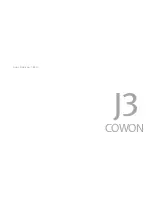
2
D-NS707F
TABLE OF CONTENTS
1.
SERVICE POSITION
..........................................
3
2.
GENERAL
............................................................
5
3.
DISASSEMBLY
3-1.
Upper (Lid) Section .........................................................
6
3-2.
Cabinet (Middle) Section ................................................
7
3-3.
MAIN PWB Assy ............................................................
7
3-4.
MAIN Board, CD Mechanism Deck
(CDM-3325ERV2) ..........................................................
8
3-5.
Turn Table Motor Assy (M901), Sled Motor Assy (M902),
Optical Pick-up (DAX-25EV) .........................................
8
4.
ELECTRICAL CHECKING
................................
9
5.
DIAGRAMS
5-1.
Block Diagram – MAIN Section (1/2) – ......................... 12
Block Diagram – MAIN Section (2/2) – ......................... 13
Block Diagram – TUNER Section – ............................... 14
Block Diagram – POWER Section – ............................... 15
5-2.
Printed Wiring Board – MAIN Board (Side A) – ............ 16
5-3.
Printed Wiring Board – MAIN Board (Side B) – ............ 17
5-4.
Schematic Diagrams – MAIN Board (1/5) – ................... 18
5-5.
Schematic Diagrams – MAIN Board (2/5) – ................... 19
5-6.
Schematic Diagrams – MAIN Board (3/5) – ................... 20
5-7.
Schematic Diagrams – MAIN Board (4/5) – ................... 21
5-8.
Schematic Diagrams – MAIN Board (5/5) – ................... 22
5-9.
IC Pin Function Descriptions .......................................... 27
6.
EXPLODED VIEWS
6-1.
Cabinet Upper .................................................................. 34
6-2.
Cabinet Lower ................................................................. 35
6-3.
Strap Front ....................................................................... 36
6-4.
MAIN PWB Assy ............................................................ 37
6-5.
CD Mechanism Deck Section (CDM-3325ERV2) .......... 38
7.
ELECTRICAL PARTS LIST
...............................
39
Unleaded solder
Boards requiring use of unleaded solder are printed with the lead-
free mark (LF) indicating the solder contains no lead.
(Caution: Some printed circuit boards may not come printed with
the lead free mark due to their particular size.)
: LEAD FREE MARK
Unleaded solder has the following characteristics.
•
Unleaded solder melts at a temperature about 40
°
C higher than
ordinary solder.
Ordinary soldering irons can be used but the iron tip has to be
applied to the solder joint for a slightly longer time.
Soldering irons using a temperature regulator should be set to
about 350
°
C.
Caution: The printed pattern (copper foil) may peel away if the
heated tip is applied for too long, so be careful!
•
Strong viscosity
Unleaded solder is more viscous (sticky, less prone to flow)
than ordinary solder so use caution not to let solder bridges
occur such as on IC pins, etc.
•
Usable with ordinary solder
It is best to use only unleaded solder but unleaded solder may
also be added to ordinary solder.
This appliance is classified as a CLASS 1 LASER product. The
CLASS 1 LASER PRODUCT MARKING is located on the rear
exterior.
Flexible Circuit Board Repairing
• Keep the temperature of soldering iron around 270˚C
during repairing.
• Do not touch the soldering iron on the same conductor of the
circuit board (within 3 times).
• Be careful not to apply force on the conductor when soldering
or unsoldering.
Notes on chip component replacement
• Never reuse a disconnected chip component.
• Notice that the minus side of a tantalum capacitor may be
damaged by heat.
CAUTION
Use of controls or adjustments or performance of procedures
other than those specified herein may result in hazardous radiation
exposure.
On AC power adaptor
• Use only the AC power adaptor supplied or
recommended in “Accessories (supplied/
optional).” Do not use any other AC power
adaptor. It may cause a malfunction.
Polarity of the plug



































